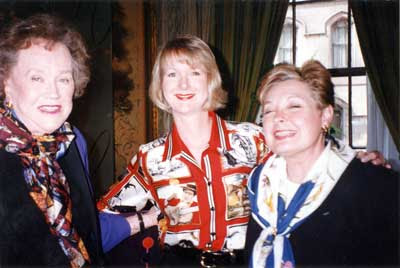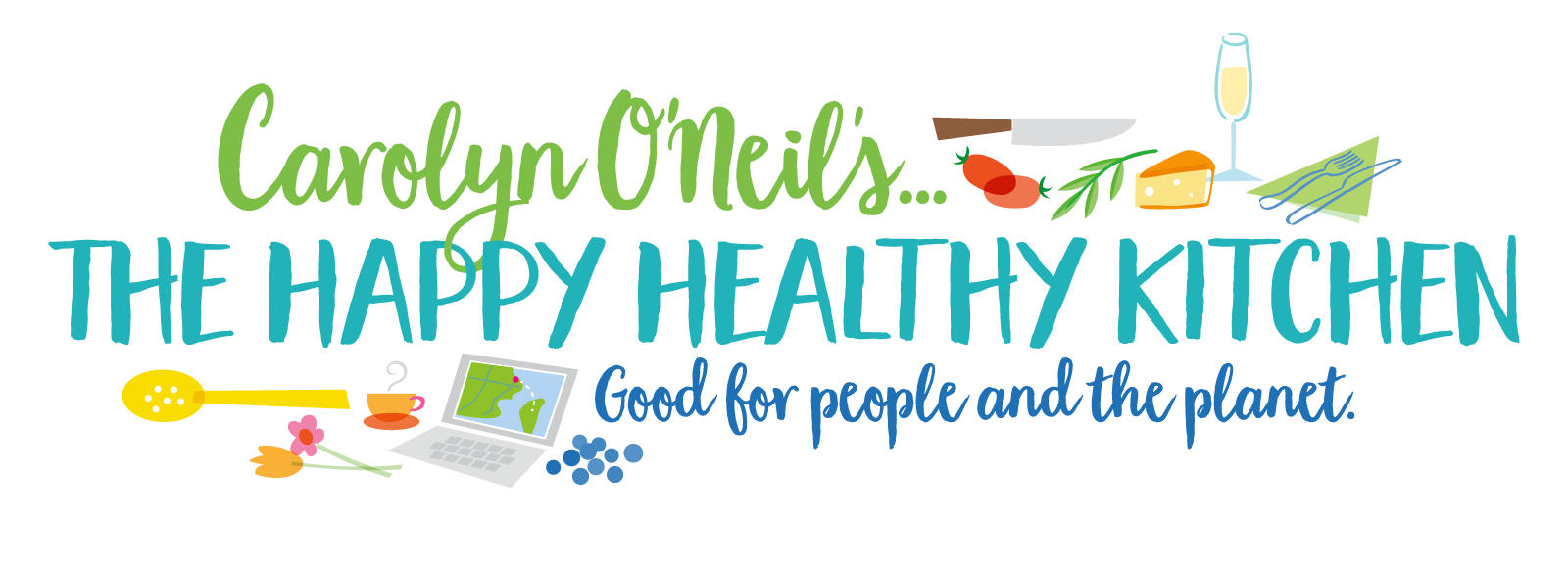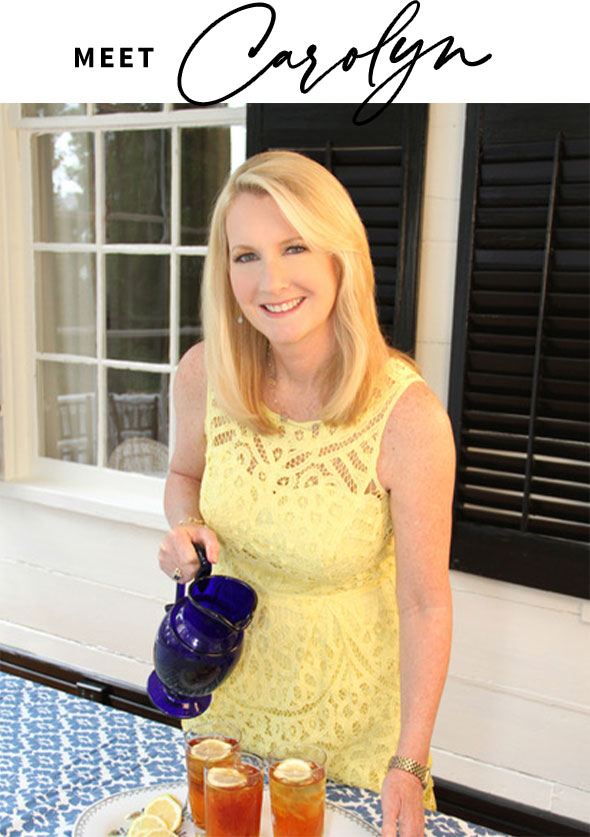August 4, 2009
Cocktails with Julia

The Rediscovered Cocktail Recipes of Paul Child
Written by Carolyn O’Neil for Gourmet Magazine, 2002
While, I haven’t received that many mind you; I have learned to anticipate with quiet excitement the ceremony of opening a robin’s egg blue box from Tiffany’s.
But, there was something different about this one. It arrived via U.S. Mail, a bit beat up and sealed with clear plastic tape. A plain white mailing label slapped on top sported a simple line drawing of pots and pans in red ink with the return address: 103 Irving Street, Cambridge, MA 02138. “That’s Julia Child’s house,” I thought, “What could this possibly be?”
Inside I found an olive green metal recipe file box that was a bit rusty on the bottom.
No jewels in this Tiffany box, or were there? When I opened the recipe file I found twenty-seven handwritten 3 by 5 index cards each detailing ingredients and instructions on how to make a cocktail. The first card written in pencil then traced over carefully in pen was titled, “Paul’s Rumbrosia.” And in the upper right hand corner a notation “invented 1948”. These were the cocktail recipes collected and created by Paul Child, Julia’s late husband.
Flipping through I noticed many were noticeably splattered apparently from enthusiastic good use. It was the names of the cocktails that really drew me in. Butterfly’s Breath, Dawn’s Early Light, Ceiling Zero, Buddha’s Eye, Rum Figaro, and Richer By Asia. And again, most cocktails included the date and place of the their concoction. Paris 1949, New Delhi 1945.
Stephanie Hersh, Julia Child’s assistant explained that they were sent to me because I was a Trustee for the Foundation of International Association of Culinary Professionals, an organization Child helped to establish.
The idea was to potentially auction off the recipe box at an upcoming IACP Foundation fundraiser that I was chairing to benefit culinary scholarships and restoration of historic cookbooks. (Note: We did auction them off and they now belong to Atlanta caterer Bill Neals.)
Hersh found the box of recipes, “When I was packing up the pantry.” It is amazing what you can find when you clean out the kitchen cupboards, especially when it is the kitchen of Julia Child. During the winter of 2000, Julia Child (then 89) had already moved to her new home in sunny Santa Barbara and Hersh stayed on in wintry Cambridge to oversee the final distribution of personal treasures to family and friends. Since then, the entire kitchen including appliances, furniture and walls has been packed up and meticulously reassembled as an exhibit at the Smithsonian Institution. According to Hersh, “they took everything as it was the day they arrived, even the coffee cup that Julia left in the dishwasher.”
It was time to call Julia in Santa Barbara to find out more about this collection of cocktail recipes. Just back from breakfast and an exercise class and just before she was to lunch with friends visiting from Cambridge, Julia remembered Paul, “He enjoyed the names as much as the cocktails. Everything had to be exact so he liked to keep notes on things and he enjoyed fooling around with flavors and colors.”
From 1949 to the early 50’s the Child’s, married in 1946, lived in Paris while Julia studied cooking at Le Cordon Bleu, the launching pad for her first book “Mastering the Art of French Cooking, Volume 1”. “We had a wonderful place. It was the third floor of a private house. We did lots of entertaining. It was lots of fun with a mixture of French and Americans.”
“I don’t think people drink cocktails as much anymore. People drank alcoholic drinks then. We didn’t have easy wine around. Wine was for dinner. You’d ask people over for drinks before dinner. It’s a nice custom to have cocktails.”
Anne Willan, long time friend, cookbook author and owner of La Varenne Ecole de Cuisine in Burgundy, remembers pre-dinner cocktails with the Childs. “Julia took care of interim nibbles such as olives, while Paul looked after the drinks. His specialty was a reverse martini—a gin martini with more extra dry vermouth than gin and a tantalizing hint of lemon zest. Paul would retreat to the classic butler’s pantry, adjacent to the kitchen, and go to work in silence, if not in secret. As a dedicated martini drinker, I remember this with affectionate addiction.”
Willan reports that Julia reminisced recently, “The best thing about a reverse martini is that you can have two of them.”
The cocktail hour was fueled very much by Paul’s worldly wit and wisdom. Barbara Haber, friend of the Child’s and Radcliffe College’s Schlesinger Library Curator of Books remembers get-togethers in Cambridge in the sixties, “Paul was a very accomplished photographer. He was a painter. He had been in the Office of Strategic Services, a precursor to the CIA, during World War II. He was well read and a storyteller, quick to laugh, florid in his descriptions, a raconteur and a man of great wit. He had star quality. Their sociability was extraordinary.”
And while Julia commandeered the kitchen preparations for dinner, cocktail hour food was simple. A bowl of gold fish crackers was the favored accompaniment.
Julia remembers “Paul loved to make drinks with rum, especially dark rum” and many cocktail recipes in the box feature gin, (Garnet, Himalaya Sunrise, Dawn’s Early Light, Ceiling Zero ). But, there was a special place for bourbon at their bar, too. Julia recalls that James Beard “inspired Paul to study the mint julep. When Jim visited us in France and you asked him what he’d like to drink he’d say ‘bourbon.” And the evidence of a shared passion for bourbon is in the box. Torn from the magazine, and neatly folded behind the recipe cards is a June 1957 House & Garden article by Beard, “The Julep and Other Summer Drinks.” Beard’s authoritatively detailed mint julep recipe insists on crushed ice, preferably crushed in strong canvas bags “the heavy duty bags used by banks for carrying large amounts of silver.” After seven paragraphs of historical background and five paragraphs of instruction Beard’s mint julep recipe concludes, “Serve with straws and feel the glow.”
Another article on Mint Juleps from Gourmet 1958 made the Paul Child collection cut, too.
Julia says of the mint julep, “ They’re great fun. I haven’t had one in years.”
But, she is recounting those Paris years with Paul in a memoir she’s working on now. How can she remember the dinner time details of 40 years ago? “I kept journals.”
“I think of cookbooks as the literature of our profession, ” believes Haber, who has dedicated her career to championing the academic value of writing on foods as “social history.” She is working with Child on an IACP Foundation project to restore old cookbooks. “Julia has given permission to use her name on book plates that read “Restored in honor of Julia Child with funds donated by ….”
The money goes to libraries across the nation to rebind or reproduce historically valuable cookbooks.
But, before you head to the attic to see what recipes grandmother left behind, note
that Haber cautions, “Not all personal recipe collections are as valuable as Paul Child’s cocktail recipe cards. They have added value because they cast light on the Child’s lives. They are artifacts that illuminate his wit and how this famous couple entertained.”
And while many old recipes are fascinating they’re not always easy to reproduce. Take Paul’s Rumbrosia for instance that calls for nine ingredients including orange bitters, Himbersaft raspberry syrup and jasmine tea.
“I don’t have Jasmine tea behind the bar these days” says Chris King, bartender at the Ritz Carlton, Buckhead in Atlanta. King agreed to test Child’s recipes and prepare them for a private party of my friends who volunteered to help with the mixology research.
Years ago, Jeopardy had a category called “potent potables” and these cocktails could have been the winning ‘make sure it’s in the form of a question’ response “What are the cocktail recipes of Paul Child.”
The cosmopolitan drinking young women on Sex and The City have nothing on Julia and Paul. “These drinks are pretty strong!” commented King who updated the drinks for today’s tastes and available ingredients, without downgrading the octane, by the way.
We started with a Himalaya Sunrise. Child’s recipe reads.
Himalaya Sunrise: September 1948 Make a martini. Pour in enough cherry juice to color it pink. Put one cherry in the bottom of each glass.
King modified it with crème de Noya and triple sec. The liquid was the color of a pale pink topaz. Then our group, moved on to test drink number two made with vodka instead of the original gin – the jewel toned Garnet, deep purple from the Welch’s grape juice. Then it was on to the awaited Paul’s Rumbrosia riddled with dark rum. As the laughter and conversation rose one particularly inspired guest encouraged me. “Why not call Julia?” Another friend produced a cell phone and I dialed the number. What felt mildly like a prank call made with the help of liquid courage turned into a delightful moment as Julia answered and said “I wish I was there!” Chris King was handed the phone “Hello Miss Child. I think we’re seeing the comeback of the cocktail.” Everyone raised a glass and shouted a spirited greeting as the cell phone was held out to the group, “Hello Julia.”
Julia offered this advice, “Tell everyone to have a wonderful time and not to mix their drinks too much.”
A lesson in cocktail history we learned that night.





